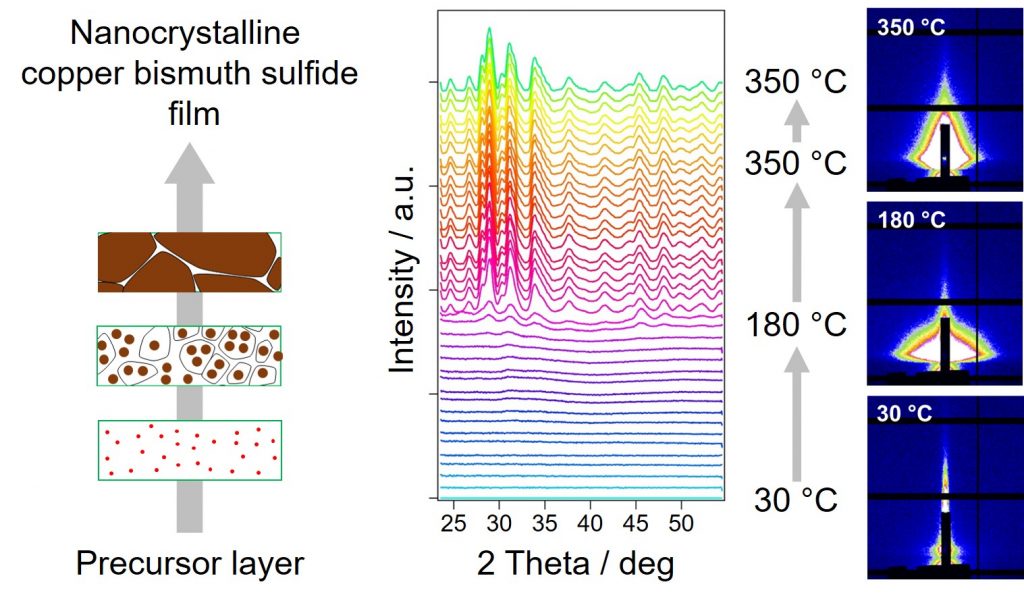Wittichenite thin films could become an efficient solution processable solar cell material
|Cu3BiS3 (wittichenite), one of the 13 copper bismuth sulfide phases which are stable at room temperature, is – in the form of thin films – an attractive material for photovoltaics, as well as for photoelectrochemical hydrogen production, lithium-ion batteries, photothermal therapy, and thermoelectrics: it has a high absorption coefficient and good charge carrier density, bismuth is significantly less toxic than other elements used for photovoltaics, and both bismuth and copper are easy to find within the earth crust.

In a recent study, Dr Thomas Rath, Prof. Heinz Amenitsch, Prof. Saif Haque and colleagues at Graz University of Technology, Imperial College London and Montanuniversität Leoben developed and characterized an alternative solution-based synthesis method for nanocrystalline Cu3BiS3 thin films for the application in semiconductor sensitized solar cells, in which they used metal xanthates as precursors, due to their low conversion temperature, simple synthesis and convenient processing. Moreover, to improve the efficiency of charge separation among the absorber (Cu3BiS3) and the electron acceptor (mp-TiO2) typically used in semiconductor sensitized photovoltaic devices, researchers put an In2S3 interlayer between them.
To characterize the generated Cu3BiS3 nanocrystalline films, scientists used X-ray diffraction, Raman and UV–vis spectroscopy, scanning electron microscopy, and transient absorption spectroscopy. Moreover, they investigated the formation of the films by a combined time-resolved grazing incidence small and wide angle X-ray scattering study using synchrotron radiation available at the CERIC Austrian SAXS beamline at the Elettra Synchrotron in Trieste, which gave valuable insights into the formation of the nanocrystalline metal sulfide films.
The proposed thin films synthesis method, coupled with the application of an interlayer to enhance charge separation, would possibly allow to apply Cu3BiS3 as a highly efficient, solution-processable, and inexpensive solar cell material.
ORIGINAL ARTICLE:



